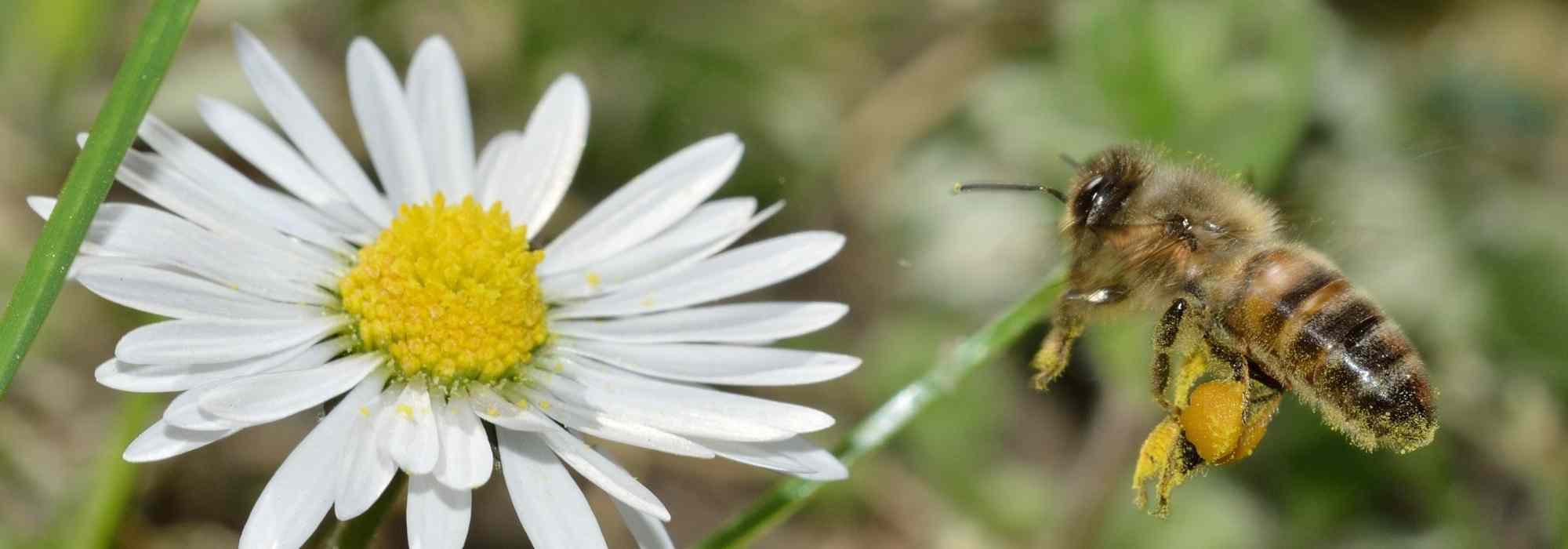
Wild bees or domestic bees: which species can be found in our gardens?
What is the role of honeybees, solitary bees and bumblebees in our environment?
Contents
Bee… the word is out! And already, many of you recoil at the thought of potential stings. Yet, beyond this rare inconvenience, these insects from the Hymenoptera class play a crucial role in nature and in our gardens. Did you know that without these pollinating insects, we could kiss goodbye to at least a third of the fruits and vegetables we commonly consume?
But behind the term “bee” also lie quite a few misconceptions. Particularly the one that limits bees solely to honey production. In reality, there is a multitude of species with opposing habits, yet all of them hold vital importance for our environment and the preservation of essential biodiversity.
Let’s explore together the different bee species most commonly found in our regions, and above all, the roles they play in the survival of our planet.
Bees in the Garden: A Precious Diversity
The word “bee” often conjures up images of a striped, hairy insect flitting from flower to flower in people’s minds. Many struggle to tell the difference between a bee and a wasp… However, in naturalist terms, bees are hymenopteran insects with a rather slender build, generally covered in hair, which gather nectar and pollen to feed their offspring. Yet, in our latitudes, there are many different species of bees.
What is a bee in the broadest sense?
In mainland France, there are over 1000 different species of bees, all members of the Apoidea family, and more than 2000 in Europe. Suffice to say, diversity reigns among bees. But they share two common traits: they all possess two pairs of membranous wings with prominent veins and a more or less elongated tongue, called a glossa, which allows them to collect nectar from flowers. Otherwise, they differ in size, hairiness, colour, behaviour, lifestyle, life cycle, and feeding habits…
All bees are inextricably linked to flowering plants, from which they gather nectar and pollen to feed themselves and their young. This is why all bees play a crucial role in pollination chains.
Social bees and solitary bees: two different lifestyles
Among bees, only a few species are social, meaning they live in organised societies with a queen, workers, internal hierarchy, and castes. This is the case for the honeybee (Apis mellifera), the only bee domesticated by humans for the production of honey, pollen, propolis, royal jelly, or wax. But this emblem of beekeeping represents just a tiny fraction of the 1000 bee species.
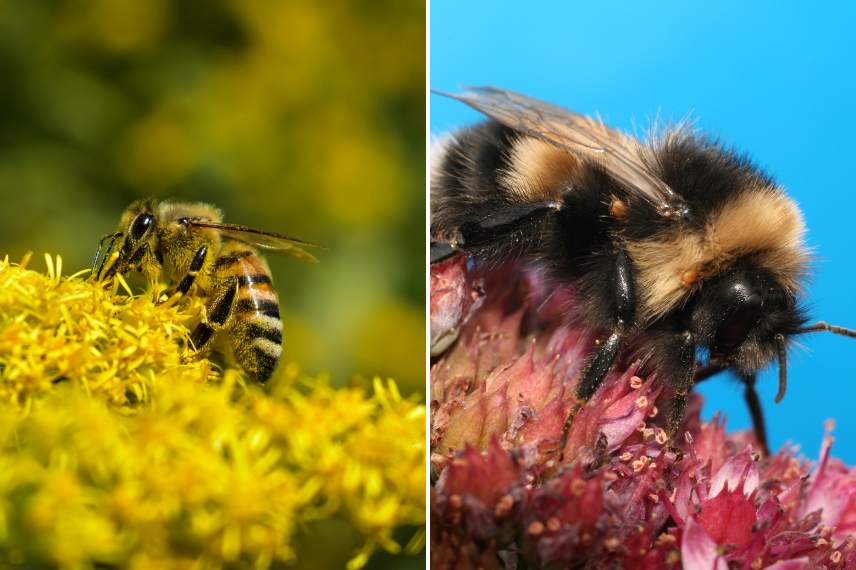
Domestic bees and bumblebees, two social species
Bumblebees (Bombus) are also social Hymenopterans and belong to the Apidae family. These large, hairy bees also live in colonies, which have the unique characteristic of being annual. They are widespread in northern regions and at high altitudes.
The majority of wild bees are solitary: each female builds her own nest, lays her eggs, and then leaves her offspring to fend for themselves. This lifestyle, less spectacular than that of hives, is nonetheless fundamental for floral biodiversity. Especially since the wild bee population has declined by nearly 25% in Europe over the past 30 years. And more than 10% of solitary bee species are threatened with extinction.
The most commonly observed species of social bees
Let’s start by looking at social bees that live “in family groups”. We can distinguish between honey bees (Apis mellifera) and bumblebees (Bombus).
The Honey Bee: A Fascinating Social Model
The honey bee is the most well-known and frequently observed of all. Very present in both rural and urban areas, it isn’t strictly wild: it lives in hives managed by humans but can also establish itself freely in hollow tree trunks or old walls. They form perennial colonies, capable of surviving for several years.
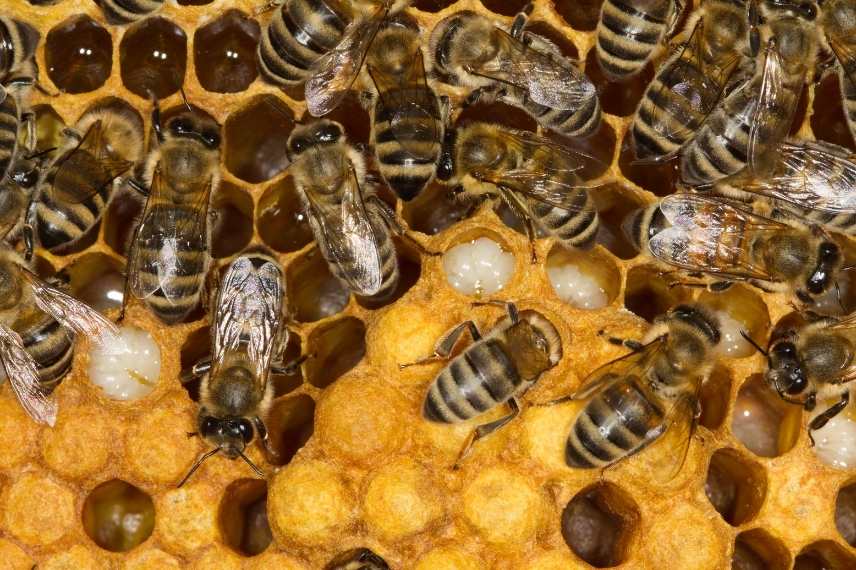
Honey bees: a life in castes
The life cycle of a colony relies on a precise division of roles. The queen, the only fertile female, lays up to 2,000 eggs per day in spring. She mates just once in her life during a nuptial flight but retains sperm for several years. The eggs give rise to three different castes, depending on their diet and cell type: worker bees, sterile females who perform all colony tasks; drones, males destined for reproduction; and occasionally a new queen, who will replace the old one if needed.
Active when temperatures exceed 10°C, honey bees visit a wide variety of flowers to collect nectar and pollen, which they bring back to the hive to feed the brood and produce honey. They are generalist pollinators, but their presence alone in the garden isn’t enough for biological balance.
The Bumblebee: A Hardy and Essential Presence
The bumblebee (Bombus) is indeed a bee in its own right. With a stocky build and dense hair, it shows remarkable cold resistance. It’s often recognised by its loud buzzing flight and vibrating foraging technique, particularly useful for pollinating certain vegetable plants like tomatoes. There are, of course, different species of bumblebees, including the buff-tailed bumblebee (Bombus terrestris), the largest and most widespread; the red-tailed bumblebee (Bombus lapidarius), which likes to nest in old stone walls; and the common carder bee (Bombus pascuorum), very peaceful, which nests on the surface in discreet corners.
Solitary bees, discreet yet essential
Alongside the honeybee and bumblebees, Europe is home to several hundred species of solitary bees that are far less known, yet utterly essential. They are called “solitary” because the founding female builds her nest alone and has no contact with her offspring. These bees are grouped into six families: Colletidae, Halictidae, Andrenidae, Melittidae, Megachilidae, and Anthophoridae. These bees are easy to observe. All build highly varied nests, which can be divided into three groups: free-standing nests on different supports, nests in the soil for terricolous species, and xylophilous nests in dead wood, stems, twigs, or tunnels dug by the female.
Among the many solitary bees, we can mention:
- Mason bees, which construct or seal their nests with mud (Osmia cornuta, Osmia bicornis).
- Carpenter bees, which burrow into wood to make their nests (Xylocopa violacea, Xylocopa valga).
- Leafcutter bees, which use thick leaves that do not disintegrate (Megachile centuncularis).
- Ground-nesting bees, which live in soil or sand (Andrena).
- Wool carder bees, which use plant fibres (Anthidium manicatum).
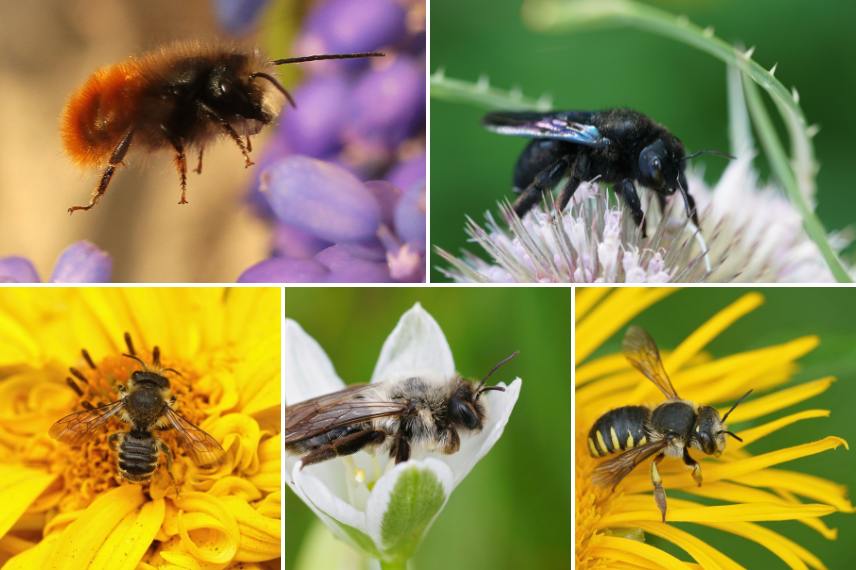
Different species of solitary bees (Osmia cornuta, Xylocopa violacea, Megachile centuncularis, Andrena, and Anthidium manicatum)
There are also parasitic bees, such as cuckoo bees, which lay their eggs in the nests of other bees. Each solitary bee species has its own corresponding cuckoo bee.
What are the roles of bees in nature?
Bees primarily act as pollinators, alongside butterflies and flies. However, they are responsible for around 90% of the work. Suffice to say, they are indispensable for plant reproduction and the production of fruits and vegetables. Some specialists even cite a figure: 75% of global food crop production depends on the action of pollinators, among which bees hold the top position. Thus, bees play a crucial role in garden ecosystems, the renewal of nature, and agriculture.
It’s worth noting that solitary bees are just as essential as honeybees. They forage on a wider variety of flowers, sometimes overlooked by honeybees, and emerge from diapause (winter dormancy) earlier—often as early as March for Osmia species—actively contributing to the pollination of early-flowering fruit trees. Moreover, with solitary bees, pollen, simply clinging to their hairs, disperses more easily.
Bees also facilitate the transfer of pollen from one variety to another within the same species.
How to create a bee-friendly garden?
Today, we are faced with a dire reality: the survival of certain wild bees is at stake. And domestic bees are facing significant waves of mortality. The causes are numerous, from climate change to intensive farming and the use of pesticidal products, from the disappearance of natural habitats to the decline of messicolous plants, not to mention the harm caused by Asian hornets.
This is why, within your own garden, everyone has a role to play, no matter how small! Simple actions can be implemented:
- Offer a wide floral selection from early spring to late summer, with a good proportion of native plants and avoiding double flowers. You can prioritise umbellifers (angelica, masterwort, eryngo…), asteraceae (tansy, blanket flower, aster…), brassicaceae (rock cress, alyssum, wallflower, candytuft…), crassulaceae (stonecrop, echeveria, houseleek, crassula…)… or flowers with deeper corollas like lamiaceae (lavender, agastache, bugleweed…) or fabaceae.
- Plant bushes with hollow wood (elder, butterfly bush, spirea, snowberry, raspberry…) which will be pruned.
- Leave an area where vegetation can grow naturally, like a “wild garden”.
- Preserve wild and undisturbed zones such as brambles, hedges, or ivy.
- Refrain from mowing a strip of short grass meadow to allow spontaneous vegetation to establish.
- Create a sparsely vegetated slope or mound for terricolous bees.
- Build a wood pile with large branches, tree trunks, or beams in a sunny, secluded spot.
- Set up shelters for bees (nesting boxes or insect hotels, simple bundles of hollow wood (bamboo, Provence reeds) or logs drilled with holes of varying depths).
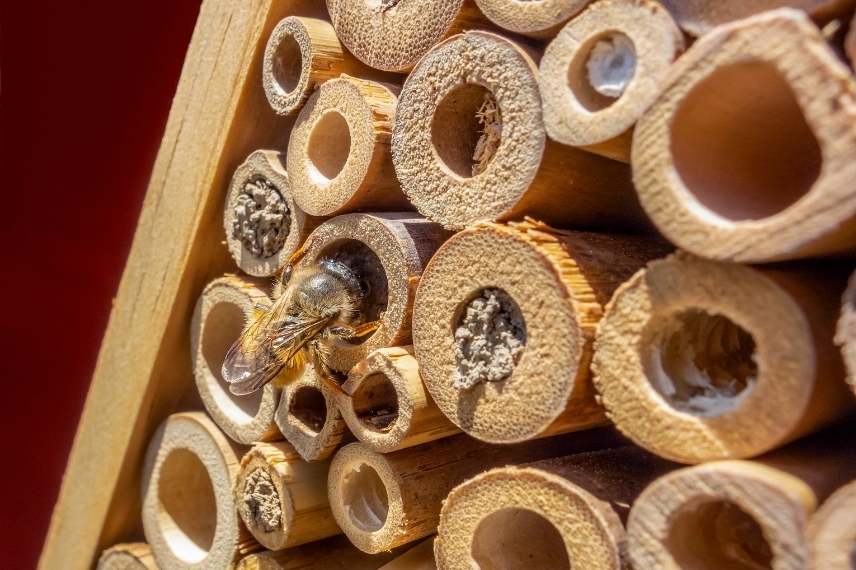
- Subscribe!
- Contents
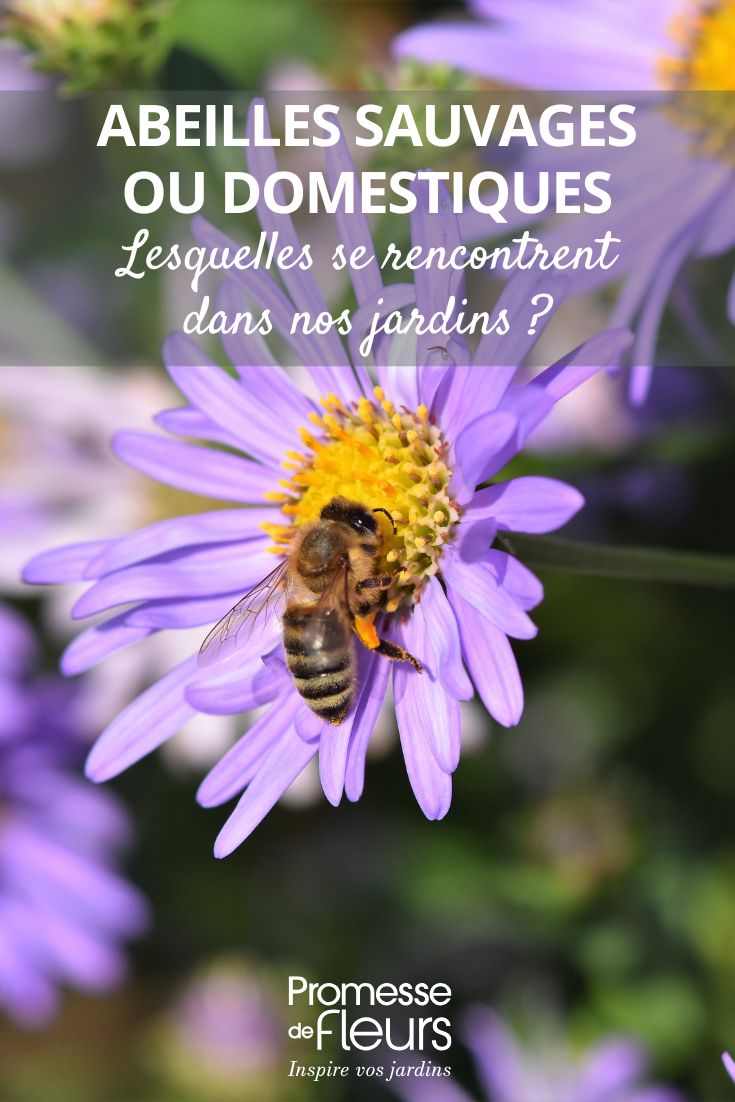































Comments